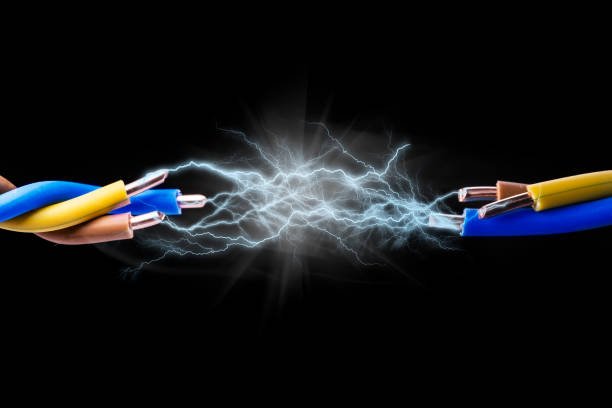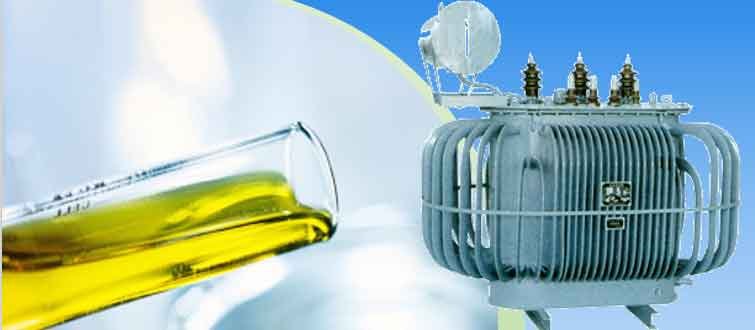What is VLF testing ?
Very Low Frequency testing, is a type of electrical testing used to assess the insulation of high-voltage cables and electrical equipment.

The purpose of VLF testing is to detect any potential weaknesses or defects in the insulation of cables and equipment, which can cause electrical breakdowns and failures. By subjecting the cables and equipment to a high voltage at a low frequency (typically between 0.1 and 0.01 Hz), VLF testing can identify any insulation defects that may not be detected by other testing methods.
VLF testing can also help to determine the overall condition of the cable or equipment’s insulation, which can be useful in predicting when maintenance or replacement may be necessary. Overall, VLF testing is a valuable tool for ensuring the reliability and safety of high-voltage electrical systems.
Where is used for VLF cable testing ?

VLF testing is primarily used for AC field testing medium and high voltage cable . And it is also very useful for checking the installation quality of cables and accessories such as as splices and terminations.
AC field testing of medium and high voltage cables: VLF testing is a non-destructive way to assess the condition of cables and is commonly used to detect insulation weaknesses and cable faults. It is especially useful for medium to high voltage cables, typically ranging from 5 kV to 500 kV.
Testing of rotating machinery: VLF testing can also be used to test the insulation systems of rotating machinery such as generators, motors, and transformers. The test is performed by applying a VLF voltage to the winding insulation system and monitoring the resulting current and voltage waveforms.
VLF testing is important for checking the installation quality of cables and accessories such as splices and terminations. During the installation process, it is important to ensure that the cable and accessories are installed correctly and that the insulation is sound. Failure to do so can result in reduced performance, shorter lifespan, or even catastrophic failure.
For splices and terminations, VLF testing can be used to ensure that the insulation is properly installed and that there are no defects or weak points in the insulation. By applying a VLF voltage to the cable and measuring the resulting current and voltage response, the technician can verify that the splice or termination is properly installed and that the insulation is intact.
What are acceptable values for VLF testing?
VLF cable testing standards
IEEE 400.2: IEEE Guide for Field Testing and Evaluation of the Insulation of Shielded Power Cable Systems Using Very Low Frequency (VLF): This standard provides guidelines for field testing and evaluation of the insulation of shielded power cable systems using VLF. The standard provides recommended test voltages, test procedures, and acceptable testing values for VLF testing.
Here are the specific test voltages, test procedures, and acceptable testing values for VLF (Very Low Frequency) testing as outlined in IEEE 400-2012:
Test voltages: The recommended test voltages for VLF hipot testing depend on the rated voltage of the cable being tested. The following table provides the recommended test voltages for different cable ratings:
Rated voltage: 5 kV – Test voltage: 27 kV
Rated voltage: 8 kV – Test voltage: 34 kV
Rated voltage: 15 kV – Test voltage: 45 kV
Rated voltage: 25 kV – Test voltage: 65 kV
Rated voltage: 35 kV – Test voltage: 80 kV
Rated voltage: 46 kV – Test voltage: 95 kV
Rated voltage: 69 kV – Test voltage: 140 kV
Test procedures: The recommended test procedures for VLF hipot testing include applying the test voltage for a duration of 15 minutes and measuring the following parameters:
Cable capacitance
VLF test current
VLF withstand voltage
Acceptable testing values: The acceptable testing values for VLF testing depend on the rated voltage of the cable being tested. The following table provides the acceptable testing values for different cable ratings:
| Rated Voltage | Cable Capacitance | VLF Test Current | VLF Withstand Voltage |
|---|---|---|---|
| 5 kV | < 10 µF/km | < 1 mA | > 17.5 kV |
| 8 kV | < 15 µF/km | < 1.5 mA | > 22 kV |
| 15 kV | < 20 µF/km | < 2 mA | > 33 kV |
| 25 kV | < 25 µF/km | < 3 mA | > 43 kV |
| 35 kV | < 30 µF/km | < 4 mA | > 50 kV |
| 46 kV | < 35 µF/km | < 4.5 mA | > 60 kV |
| 69 kV | < 40 µF/km | < 5.5 mA | > 90 kV |
It’s important to note that these values are only recommendations, and actual testing values may vary based on specific testing conditions and equipment used.
What is the advantage of VLF tester ?
- More Effective at Detecting Insulation Weaknesses
One of the main advantages of VLF testing is its effectiveness at detecting insulation weaknesses. VLF testing is capable of detecting partial discharges and withstand voltage breakdowns in cables, which are indicators of potential insulation failures. This makes VLF testing more effective than other testing methods, such as DC testing, which can only detect insulation resistance.
- Longer Cable Testing Capabilities
VLF testing can be used for cable testing over longer distances, making it ideal for testing underground cables or cables in hard-to-reach areas. This is because the VLF testing equipment generates high voltage at a frequency that allows it to penetrate the cable insulation and reach the conductor, regardless of the length of the cable.
- Safer
VLF testing is safer than other testing methods, such as DC testing. This is because VLF testing generates a lower voltage, which reduces the risk of electrical shock. Additionally, VLF testing equipment is designed with safety features such as interlocks and grounding devices to prevent accidents.
- Cost-Effective
VLF testing is generally more cost-effective than other testing methods. The equipment required for VLF testing is less expensive than the equipment required for other testing methods, such as DC testing. Additionally, the testing procedure takes less time, which can result in cost savings for the user.
- Easier to Operate
VLF testing equipment is easier to operate than other testing equipment. The testing procedure is simple and can be performed by personnel with minimal training. This reduces the need for highly skilled personnel and can result in cost savings for the user.
What is the disadvantage of vlf testing ?
1. Limited Voltage Range
VLF testing is limited in terms of the voltage range it can generate. The maximum voltage that can be generated is around 200 kV, which may not be sufficient for some applications.
2. Limited Detection Capability
While VLF testing is more effective at detecting insulation weaknesses compared to DC testing, it still has limitations. VLF testing is not capable of detecting all types of insulation weaknesses, and some failures may go undetected.
3. Limited Applicability
VLF testing is not suitable for all types of cables. For example, VLF testing may not be effective for cables with high capacitance, such as cables with XLPE (Cross-Linked Polyethylene) insulation.
4. Sensitivity to Moisture
VLF testing is sensitive to moisture in the cable insulation. Moisture can cause the cable insulation to break down and lead to false readings during testing.
5. Environmental Impact
VLF testing can have an environmental impact due to the use of high voltage. This can lead to electromagnetic interference and can potentially damage nearby electronic devices.
Is VLF testing destructive ?
VLF testing is generally considered to be non-destructive. It uses a low frequency and voltage to test the insulation of high-voltage cables and equipment, which does not cause any damage to the insulation or the equipment itself.
However, it is important to note that VLF testing can potentially uncover existing insulation defects that may require further investigation or repair. In rare cases, if the cable or equipment has pre-existing damage, VLF testing may exacerbate the damage and cause further problems.
How to choose VLF Hipot Tester ?
When you consider to choose a suitable VLF hipot tester, Let’s delve deeper into each factor to provide a more detailed understanding of what to consider :
Voltage Rating: Ensure that the VLF hipot tester has a voltage rating that matches or exceeds the maximum voltage levels of the systems or components you intend to test. It’s important to select equipment that can handle the required voltage range to ensure accurate and safe testing.
Current Capacity: Consider the maximum current output of the VLF hipot tester. This is crucial for testing applications that require high current levels, such as testing larger cables or high-capacity electrical systems. Ensure that the equipment can deliver the necessary current to perform the tests effectively.
Frequency Range: Verify that the frequency range of the VLF hipot tester aligns with the specifications of your testing requirements. Different applications may require specific frequency ranges, so it’s important to choose equipment that can generate the desired frequencies for accurate testing.
Accuracy: Look for VLF hipot test set that offers reliable and precise measurement capabilities. The equipment should provide accurate readings of voltage, current, and other parameters to ensure the integrity of your test results. Consider equipment with built-in calibration features or options for periodic calibration to maintain accuracy over time.
Safety Features: Safety is paramount during testing operations. Ensure that the VLF hipot tester includes essential safety features such as overcurrent protection, ground fault detection, emergency stop buttons, and interlocking mechanisms to prevent accidental discharges or harm to operators. Compliance with safety standards, such as IEC 61010, is also important.
Portability: Depending on your testing needs, consider whether a portable VLF hipot tester is required for on-site testing or a fixed installation for laboratory or factory environments. Portable testers offer flexibility and ease of transportation, while fixed installations may provide greater stability and integration with existing setups. factory environments. Portable testers offer flexibility and ease of
Ease of Use: Look for VLF hipot test equipment with user-friendly interfaces and intuitive controls. Clear displays, easy-to-navigate menus, and well-designed user interfaces can simplify the testing process and reduce the risk of errors. Consider equipment with features like pre-programmed test templates or automated test sequences to streamline operations.
Testing Standards Compliance: Ensure that the VLF hipot test kit complies with relevant industry standards such as IEC, IEEE, or ASTM. Compliance ensures that the equipment meets established quality and performance criteria, giving you confidence in its reliability and accuracy.
Support and Service: Consider the availability of technical support, warranty, and maintenance services from the VLF tester manufacturer . KV Hipot Equipment Company will be a good choice to buy a reliable VLF hipot tester . Adequate support and service can help address any issues, provide assistance with equipment setup or troubleshooting, and ensure timely repairs or calibration when needed.Service:
Cost: While cost is a significant factor, it should be balanced with the features, quality, and long-term value offered by the VLF hipot tester. Evaluate the overall benefits and return on investment the equipment provides, considering factors like durability, accuracy, efficiency, and support services.





